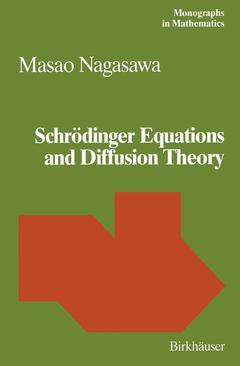Schrödinger Equations and Diffusion Theory, 1993 Monographs in Mathematics Series, Vol. 86
Auteur : Nagasawa M.

Schrödinger Equations and Diffusion Theory addresses the question "What is the Schrödinger equation?" in terms of diffusion processes, and shows that the Schrödinger equation and diffusion equations in duality are equivalent. In turn, Schrödinger's conjecture of 1931 is solved. The theory of diffusion processes for the Schrödinger equation tell us that we must go further into the theory of systems of (infinitely) many interacting quantum (diffusion) particles.
The method of relative entropy and the theory of transformations enable us to construct severely singular diffusion processes which appear to be equivalent to Schrödinger equations.
The theory of large deviations and the propagation of chaos of interacting diffusion particles reveal the statistical mechanical nature of the Schrödinger equation, namely, quantum mechanics.
The text is practically self-contained and requires only an elementary knowledge of probability theory at the graduate level.
Self-contained and well-organized introduction to the theory of diffusion processes and applications
Recommended to researchers and graduate students in probability theory, functional analysis and quantum dynamics
Excellent addition to the literature in probability theory?
Includes supplementary material: sn.pub/extras
Date de parution : 09-2012
Ouvrage de 323 p.
15.5x23.5 cm
Disponible chez l'éditeur (délai d'approvisionnement : 15 jours).
Prix indicatif 52,74 €
Ajouter au panierDate de parution : 12-2012
Ouvrage de 319 p.
15.5x23.5 cm
Disponible chez l'éditeur (délai d'approvisionnement : 15 jours).
Prix indicatif 79,11 €
Ajouter au panierThème de Schrödinger Equations and Diffusion Theory :
Mots-clés :
chaos; diffusion process; probability; probability theory; quantum mechanics



